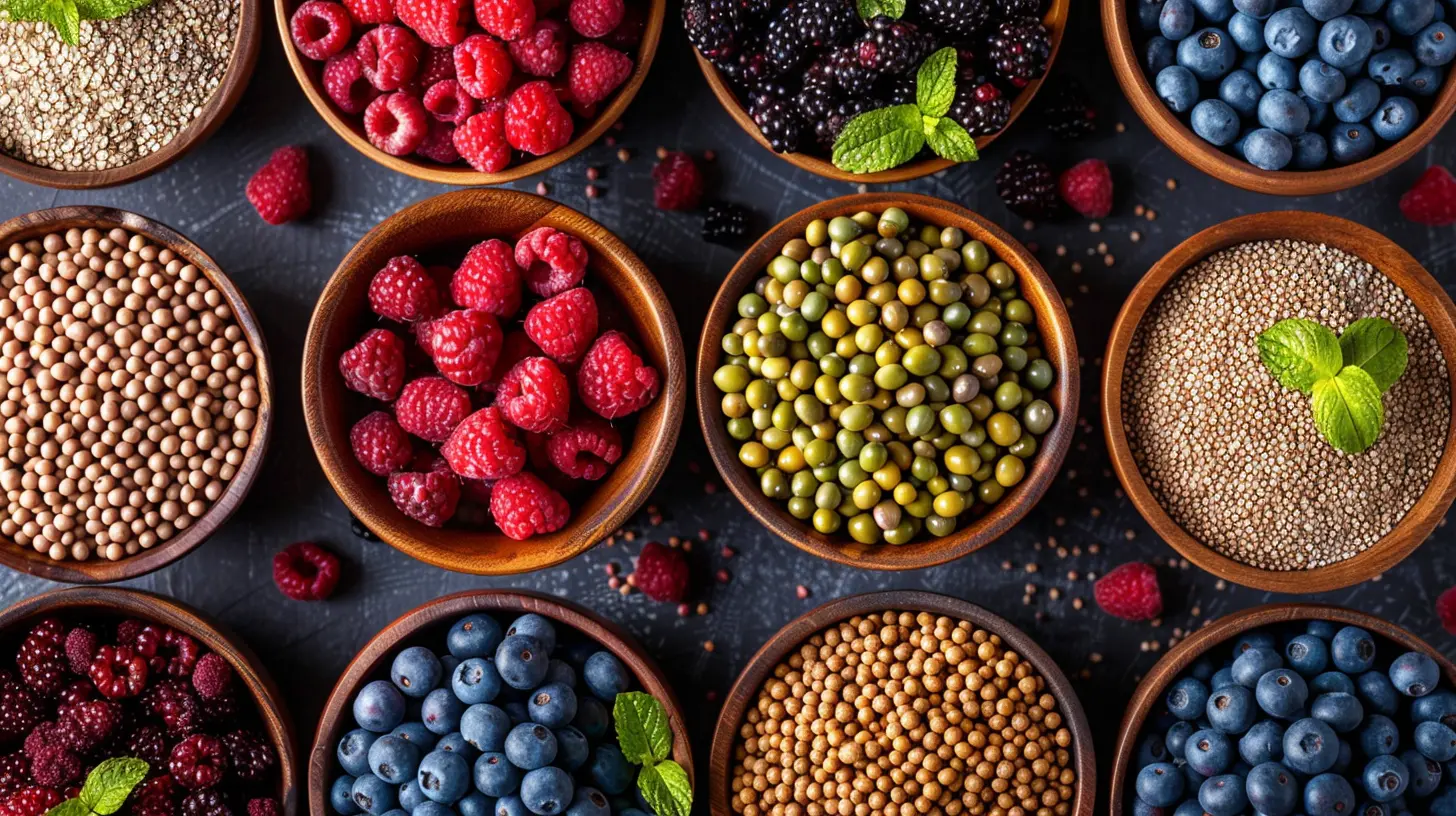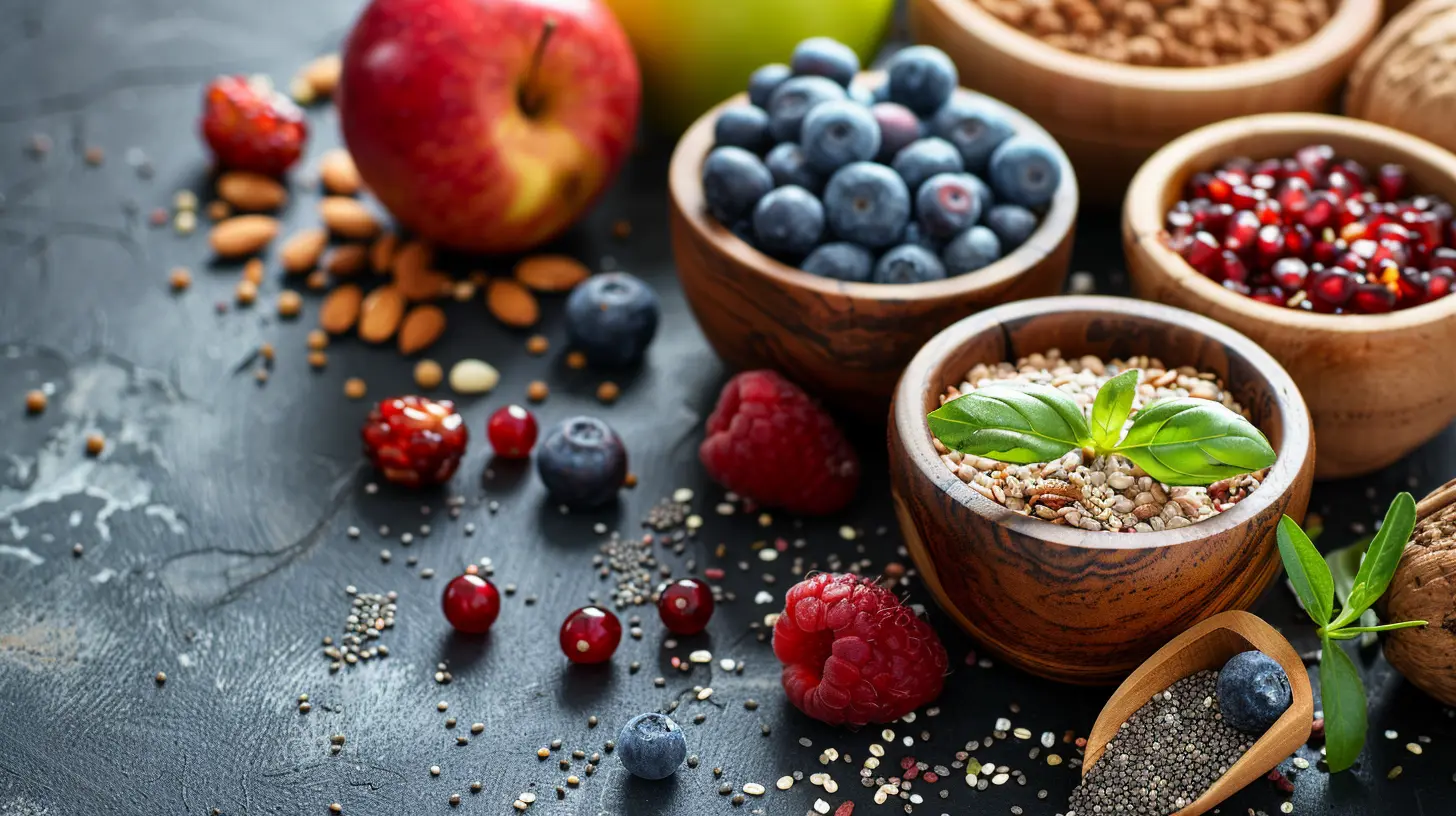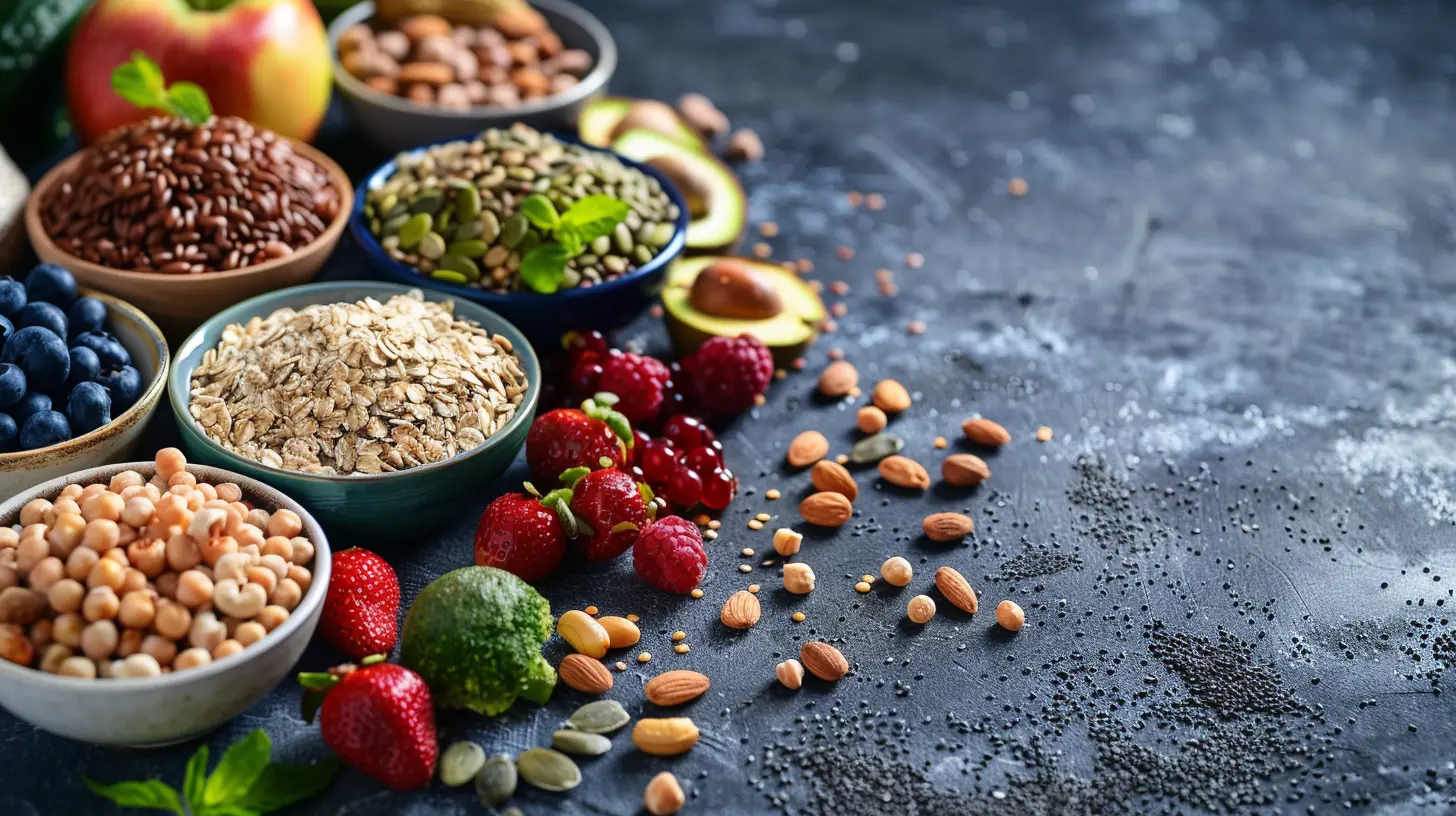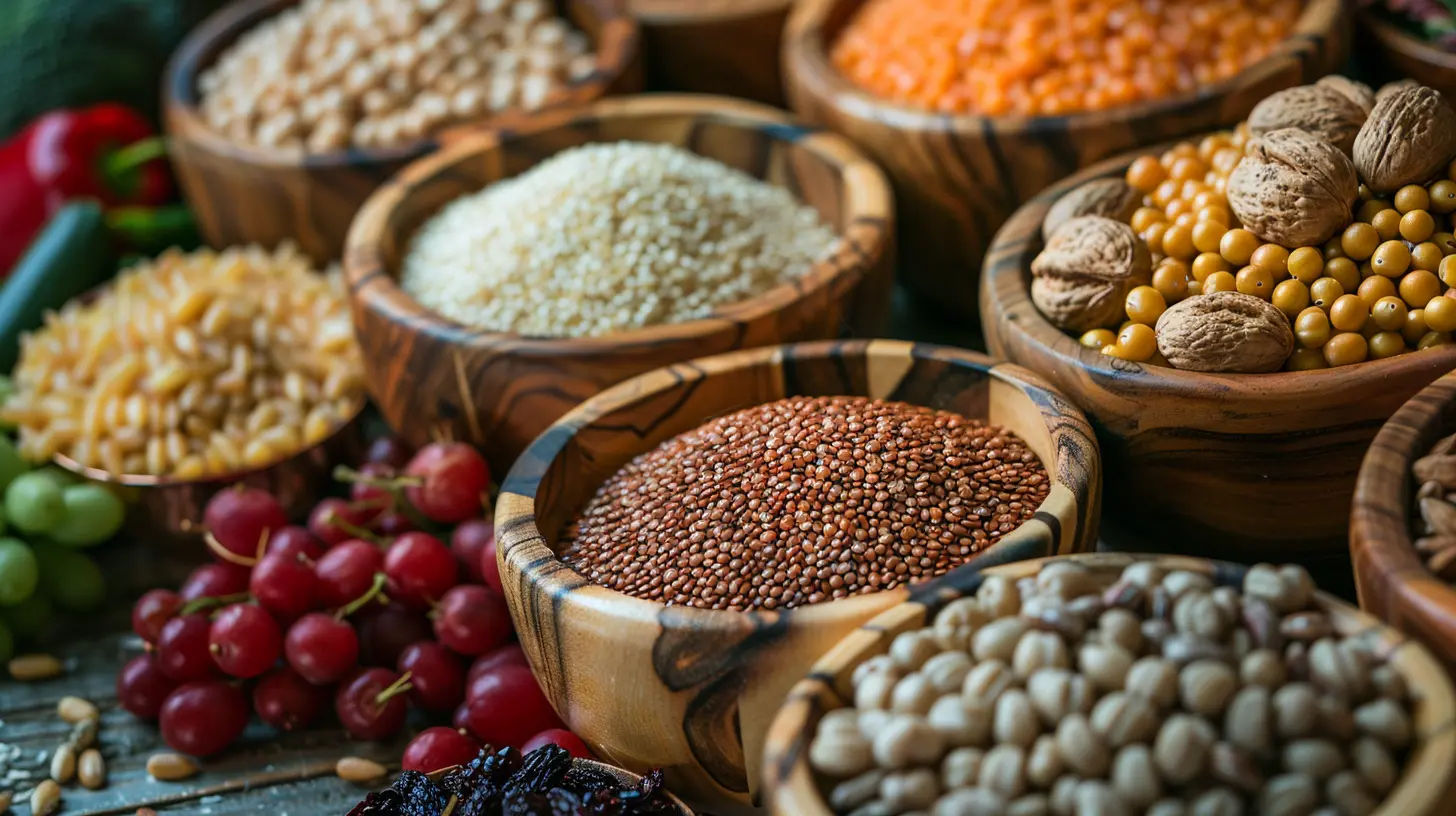Exploring the Role of Fiber in Reducing Inflammation
21 August 2025
Inflammation is a double-edged sword. On one hand, it's our body's natural defense mechanism, fighting off infections and healing injuries. On the other, chronic inflammation can lead to serious health problems like heart disease, diabetes, and even cancer.
So, how do we keep inflammation in check? One simple, yet powerful answer: fiber. This often-overlooked nutrient has a significant role in reducing inflammation and promoting overall health. Let’s dive into how fiber works and why you should make it a priority in your diet.

What Is Fiber and Why Does It Matter?
Fiber is a type of carbohydrate that our bodies don’t fully digest. Unlike sugar or starch, fiber moves through our digestive system largely intact, and that’s exactly why it’s so beneficial. It helps regulate digestion, supports gut health, and, most importantly, keeps inflammation under control.There are two types of fiber, and both contribute to fighting inflammation:
- Soluble fiber – Dissolves in water, forming a gel-like substance that helps lower cholesterol and blood sugar levels. Found in oats, beans, lentils, apples, and citrus fruits.
- Insoluble fiber – Doesn’t dissolve in water, helping to add bulk to stool and promoting healthy digestion. This type is abundant in whole grains, nuts, seeds, and vegetables.
Now, let's explore how fiber influences inflammation and why you should add more of it to your plate.

How Fiber Helps Reduce Inflammation
1. Supports a Healthy Gut Microbiome
Did you know that your gut is home to trillions of bacteria? Some are beneficial, while others can fuel inflammation. Fiber acts like food for the good bacteria, helping them thrive and multiply.When gut bacteria digest fiber, they produce short-chain fatty acids (SCFAs), like butyrate, acetate, and propionate. These compounds:
- Strengthen the gut barrier, preventing harmful substances from entering the bloodstream.
- Reduce the production of pro-inflammatory chemicals.
- Enhance immune function and promote overall gut health.
A balanced gut microbiome means less inflammation and a lower risk of inflammatory-related diseases.
2. Lowers CRP (C-Reactive Protein) Levels
C-reactive protein (CRP) is a marker of inflammation in the body. High CRP levels are linked to conditions like heart disease, arthritis, and metabolic disorders.Studies suggest that diets rich in fiber help lower CRP levels, reducing overall inflammation in the body. This is especially true for soluble fiber, which seems to be the most effective in controlling inflammatory markers.
3. Regulates Blood Sugar and Insulin Levels
High blood sugar levels can trigger chronic inflammation, leading to insulin resistance and an increased risk of type 2 diabetes.Fiber slows down the absorption of sugar, preventing harmful spikes in blood sugar and insulin levels. This not only stabilizes energy levels but also reduces oxidative stress and inflammation, keeping your cells healthy.
4. Reduces Obesity-Related Inflammation
Carrying excess weight contributes to chronic inflammation, as fat cells release inflammatory chemicals. The more fat you have, the higher the inflammation levels in your body.Fiber plays a crucial role in weight management by:
- Promoting fullness and reducing overeating.
- Slowing digestion, which helps with appetite control.
- Supporting gut bacteria, which influence metabolism and fat storage.
By maintaining a healthy weight, you significantly reduce inflammation and improve overall well-being.
5. Supports Heart Health
Inflammation is a major player in heart disease. It contributes to arterial damage, increasing the risk of strokes and heart attacks.A fiber-rich diet has been linked to:
- Lower LDL (bad) cholesterol levels.
- Improved blood pressure regulation.
- Reduced risk of plaque buildup in arteries.
Adding fiber to your diet is a heart-friendly move, keeping inflammation and cardiovascular problems at bay.

Best Fiber-Rich Foods to Fight Inflammation
Now that we know the benefits, let’s talk about where to get your fiber fix. Incorporating these foods into your daily diet can help you stay ahead of inflammation:Fruits and Vegetables
- Berries (blueberries, raspberries, strawberries)- Apples (with the skin!)
- Oranges
- Bananas
- Leafy greens (spinach, kale, Swiss chard)
- Cruciferous vegetables (broccoli, Brussels sprouts, cauliflower)
- Carrots and sweet potatoes
Whole Grains
- Oats- Brown rice
- Quinoa
- Barley
- Whole wheat bread and pasta
Legumes and Nuts
- Lentils- Chickpeas
- Black beans
- Almonds
- Walnuts
- Chia seeds and flaxseeds
Fermented Foods (Bonus for Gut Health!)
- Yogurt- Kefir
- Sauerkraut
- Kimchi
By combining these fiber-rich foods in your meals, you create a powerful anti-inflammatory diet that supports overall health.

How Much Fiber Do You Need?
Despite fiber’s numerous benefits, most people don’t get enough. The recommended daily intake is:- Men: 30-38 grams per day
- Women: 21-25 grams per day
If you’re not used to eating much fiber, increase your intake gradually to avoid bloating or discomfort. Also, drink plenty of water to help fiber work efficiently in your digestive system.
Small Changes, Big Impact
Getting more fiber doesn’t mean overhauling your entire diet overnight. Small, sustainable changes can make a huge difference:- Swap white bread for whole wheat.
- Choose brown rice instead of white.
- Add chia or flaxseeds to smoothies and yogurt.
- Snack on nuts and fruits instead of processed snacks.
- Start your day with oatmeal instead of sugary cereals.
Over time, these simple shifts add up, reducing inflammation and improving your long-term health.
Final Thoughts
Fiber is more than just a digestion booster—it’s a powerful anti-inflammatory weapon. By feeding gut bacteria, regulating blood sugar, reducing CRP levels, and supporting heart health, fiber helps keep inflammation under control.So, next time you’re planning your meals, think fiber-first. Your body will thank you for it!
all images in this post were generated using AI tools
Category:
Fiber Rich DietAuthor:

Holly Ellison
Discussion
rate this article
1 comments
Ivan McConkey
What a delightful read! 🌟 Fiber truly is a superhero for our health, fighting inflammation while promoting overall wellbeing. Let's celebrate the power of fruits, veggies, and whole grains for a happier, healthier life! 🥦🍎✨
September 13, 2025 at 2:36 AM

Holly Ellison
Thank you for your kind words! 🌟 I completely agree—fiber is indeed a powerhouse for our health! 🥦🍎✨


